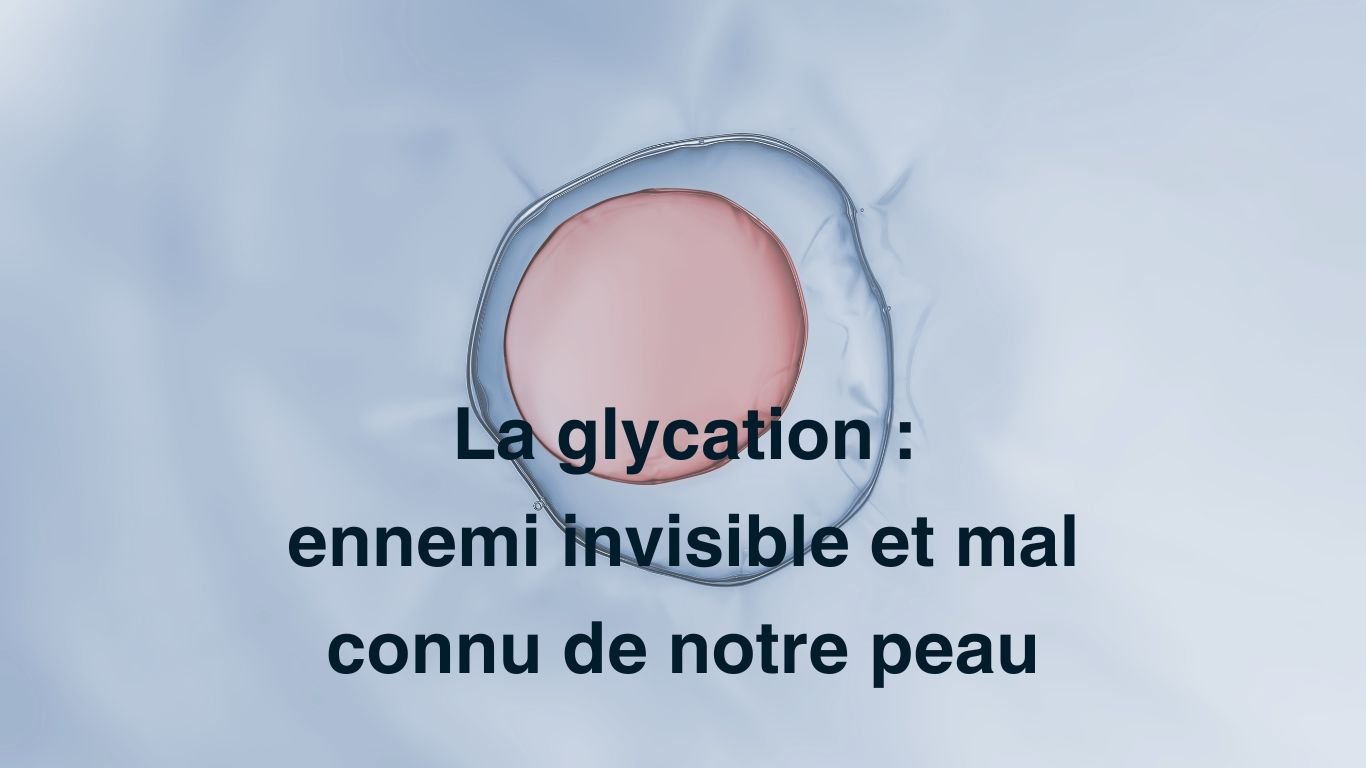In the field of nutricosmetics to support aging, we often hear about hyaluronic acid and collagen. However, there are a certain number of active ingredients whose action is underestimated because they are unknown to the general public.
This is the case with the group of active ingredients present in melon extract, and in particular SOD. Acronym for “SuperOxide Dismutase”, this enzyme is closely observed by scientific research for its presence in the mitochondria of cells and the role it plays there in the fight against oxidative stress.
But then, what differences exist between vitamin C and SOD? Do these active ingredients meet exactly the same needs? Why has interest in this molecule grown so much in recent years within the nutricosmetics industry?
 Why seek to fight against oxidative stress?
Why seek to fight against oxidative stress?
A process that weakens the cell walls of your body, oxidative stress is explained by the over-proliferation of the number of unstable molecules, called “free radicals” to refer to the source of their instability: one or more unpaired electrons.
Resulting from the normal functioning of your body, these free radicals are organic waste generated during biochemical reactions occurring daily in your cells.
This is why your body naturally has mechanisms for processing this waste (by neutralizing this instability through electron pairing).
However, the advent of contemporary life has brought new sources of oxidative stress in such proportions that it becomes difficult for your body to process them.
Taste enhancers, lack of sleep, psychological stress, cigarette smoke, alcohol, too rich food... The factors align to make the equation difficult to solve.
A factor of premature aging
It is through studies such as that carried out by Ilaria Liguori's team ¹ that the structural damage caused by significant and chronic oxidative stress has come to light.
Among the negative effects that this would cause, we note premature aging of cells.
Furthermore, aging itself leads to disruptions in various cellular mechanisms, which increases the level of oxidative stress: a vicious circle then sets in!
 A factor in the appearance of various diseases
A factor in the appearance of various diseases
Cancers, diabetes, cardiovascular, neurological, pulmonary diseases... the list of diseases whose onset is correlated with the level of oxidative stress is long, as shown by studies such as that signed by Simone Reuter's team ² .
Antioxidants: How are vitamin C and SOD different?
Fortunately, there are ways to improve your body's defenses against oxidative stress.
Improving the quality and duration of your sleep and reducing your mental load as well as your level of psychological stress are part of the means your body has to maintain its defenses at an acceptable level.
But it is above all through diet that you can offer your cells a real improvement.
Antioxidants: molecules that neutralize free radicals
Certain molecules from foods that you can consume on a daily basis actually have a “hole” in their outermost electronic layers. These are therefore electrically unstable molecules, just like free radicals, whose needs are opposite: they lack one or more electrons to be electrically neutral.
Thus, by bringing together a free radical and an antioxidant whose respective numbers of surplus and missing electrons correspond, it becomes possible to reduce the level of oxidative stress in an organism.
 However, it would not be correct to conclude that all antioxidants have exactly the same effects and this is due, among other things, to their mode of operation.
However, it would not be correct to conclude that all antioxidants have exactly the same effects and this is due, among other things, to their mode of operation.
This is particularly why SOD and vitamin C are not interchangeable but rather complementary.
A very useful complementarity
If we had to remember only one difference between the action of vitamin C and that of SOD, it would be the scope of the antioxidant effects that these two active ingredients offer.
Capable of protecting the walls of your cells, vitamin C is added to the group of external defenses to preserve their integrity against attacks from free radicals present in the extracellular matrix (in which your cells are bathed).
Present mainly inside your cells, particularly in the mitochondria, SOD has effects whose scope of action is more internal.
Far from being interchangeable, these two molecules are complementary and it is by combining them that it becomes possible to create protection both internal and external to your cells.
SOD for your mitochondria: a naturally occurring enzyme
Cellular organelle present in your cells, the mitochondria is responsible for certain key functions in the survival of its host, in particular “cellular respiration”.
 The mechanism by which the cell obtains the energy it needs to function (through the transformation of glucose into adenosine triphosphate), cellular respiration cannot be achieved without producing free radicals.
The mechanism by which the cell obtains the energy it needs to function (through the transformation of glucose into adenosine triphosphate), cellular respiration cannot be achieved without producing free radicals.
It is in this context that SOD, naturally present in the mitochondria, intervenes. Its role is in fact to limit the production of this organic waste during common biochemical reactions at the level of your cells, such as cellular respiration.
 Melon extract to support your cells
Melon extract to support your cells
Unfortunately, modern living conditions often place demands on your body beyond what the defense mechanisms with which evolution has equipped it cover, and this is why nutricosmetics offers to accompany your body to support it in its natural struggle. against free radicals.
Indeed, the shortness of the constituents of your cells, starting with your mitochondria, increases your fragility in the face of different diseases. Furthermore, the efficiency of your body's cellular respiration gradually decreases, which results in a decline in your vitality.
By using melon extract, rich in SOD, certain players in the world of nutricosmetics have understood that it is possible to make their contribution to maintaining normal functioning for your cells during the aging process.
This is particularly what MyCollagenLift offers.
MyCollagenLift: natural and well-known ingredients for an exclusive formula
It is at the cost of constant monitoring, rigorous research work and kindness exuding Swiss know-how that MyPureSkin brought MyCollagenLift into the world.
Food supplement taking advantage of the properties of ingredients of 100% natural origin, this nutricosmetic has become a complementary source of antioxidants whose effectiveness has been praised by the IEA (European Institute of Antioxidants) which evaluated it as being “a product of exceptional quality to combat oxidative stress”.
Thanks to its exclusive formula, each ingredient of which works in synergy with the others, MyCollagenLift supports you during a normal aging process to:
- Stimulate your production of collagen and hyaluronic acid.
- Nourish your cells;
- Help protect them from oxidative stress;
Indeed, the MyCollagenLift formula is based on:
- Highly bioavailable collagen peptides to support your endogenous collagen production;
- Hyaluronic acid capable of carrying more than 1000 times its weight in water to help maintain the correct level of hydration for your skin;
- Wheat ceramides (gluten-free) to support this hydration by limiting your insensible water loss;
- Organic silicon to support your antioxidant defenses while helping to restructure your epidermis;
- Vitamins C (extracted from acerola fruit) and E to help you in your fight against free radicals;
- Grape OPCs and zinc also act in this sense;
- SOD extracted from melon, which research has shown can help support your antioxidant defenses.
Still looking for a source of nutrition rich in antioxidants to support your skin towards healthy aging? MyCollagenLift lends you a helping hand by offering you results from 4 weeks for your first 3-month treatment.
- Study by Ilaria Liguori evaluating the effects of oxidative stress on the aging process and the onset of age-related diseases: https://www.ncbi.nlm.nih.gov/pmc/articles/PMC5927356/
- Study by Simone Reuter on the links between oxidative stress, inflammation mechanisms and the probability of the appearance of cancers: https://www.ncbi.nlm.nih.gov/pmc/articles/PMC2990475





Share:
Eating well: a matter of balance
Maintain your daily vitality with an effective routine